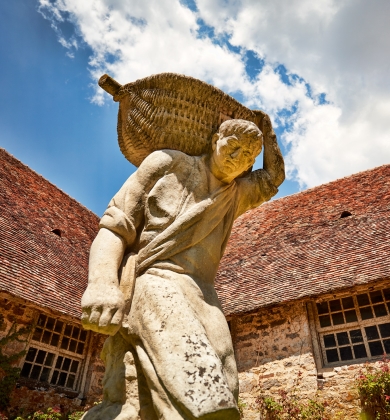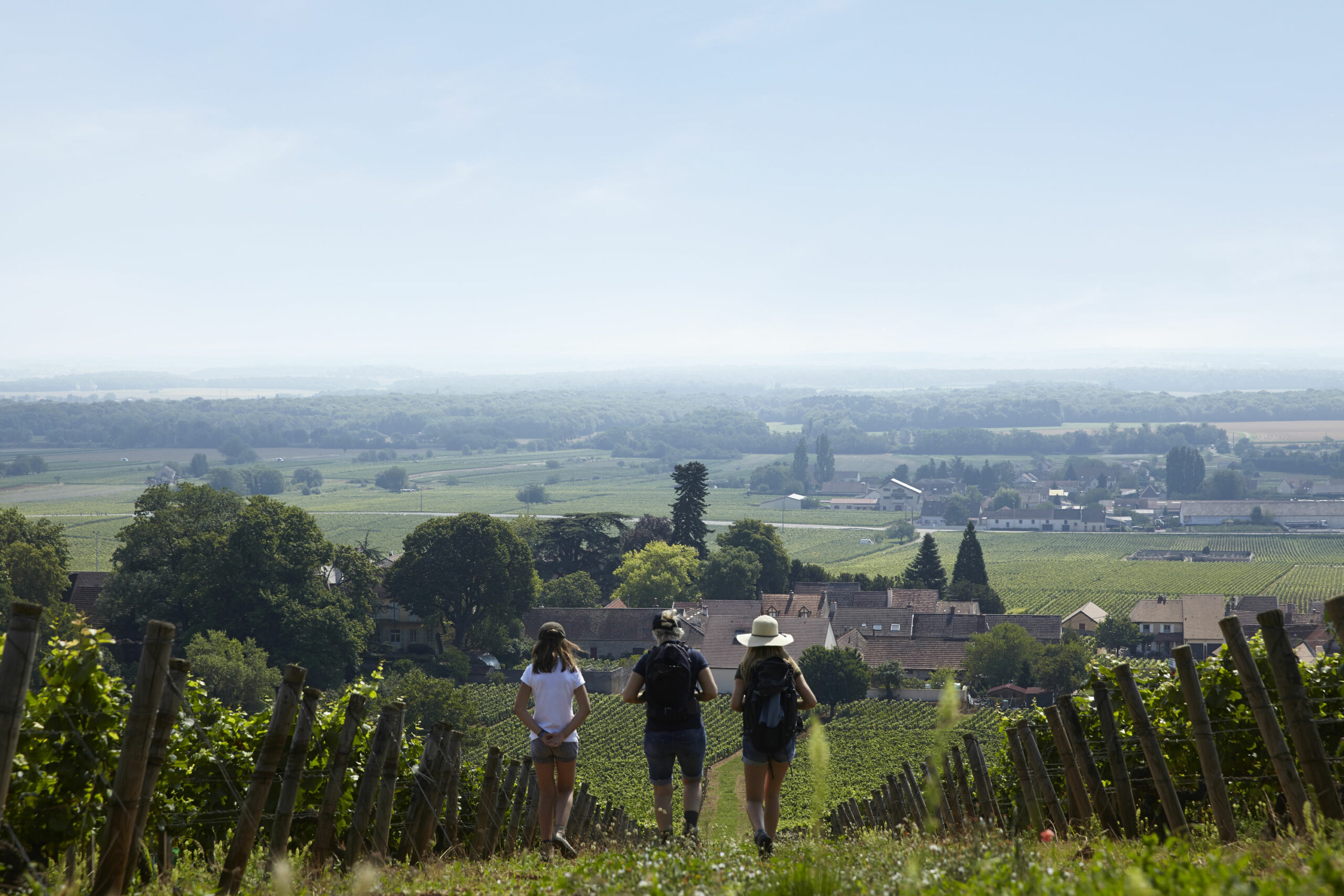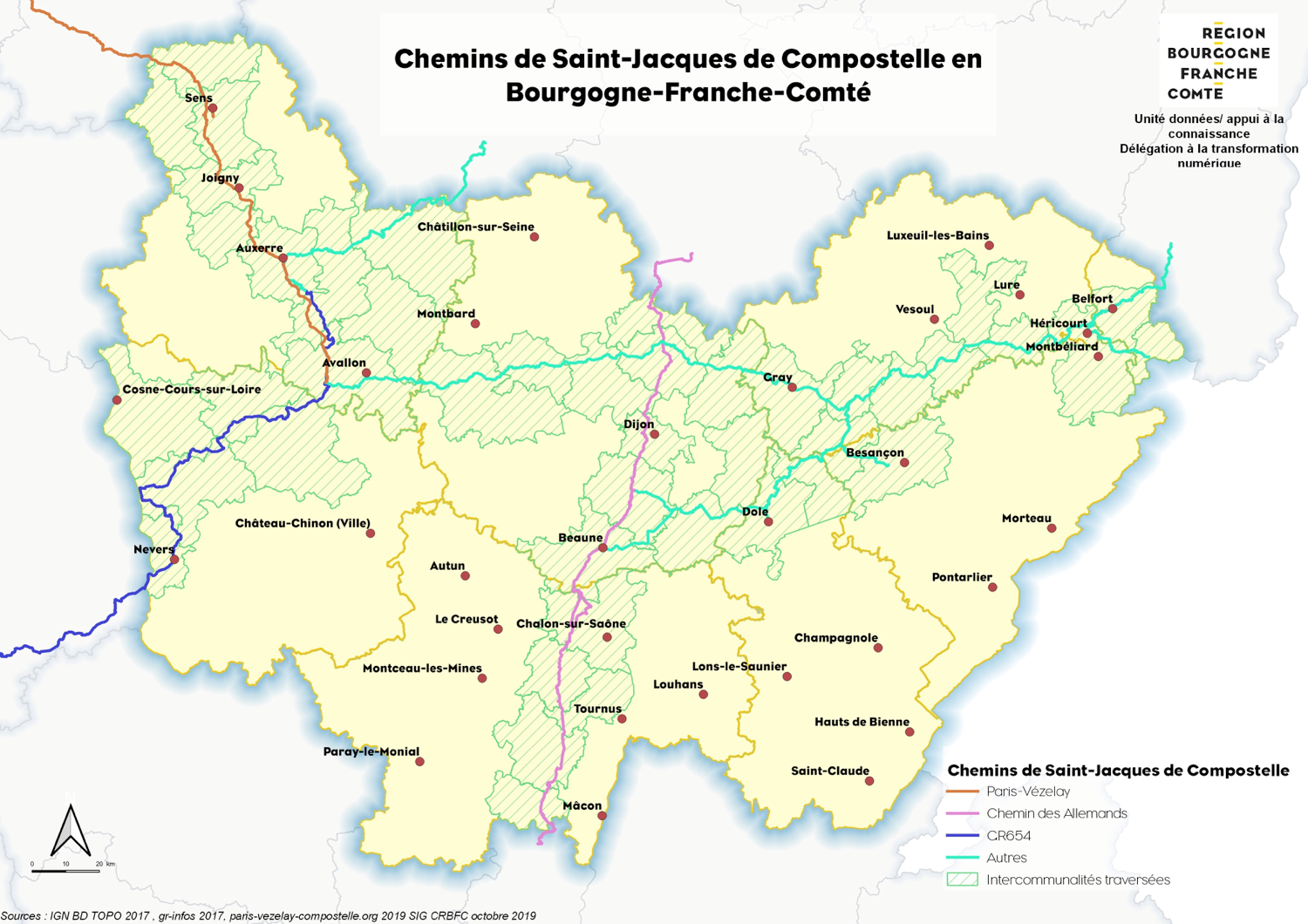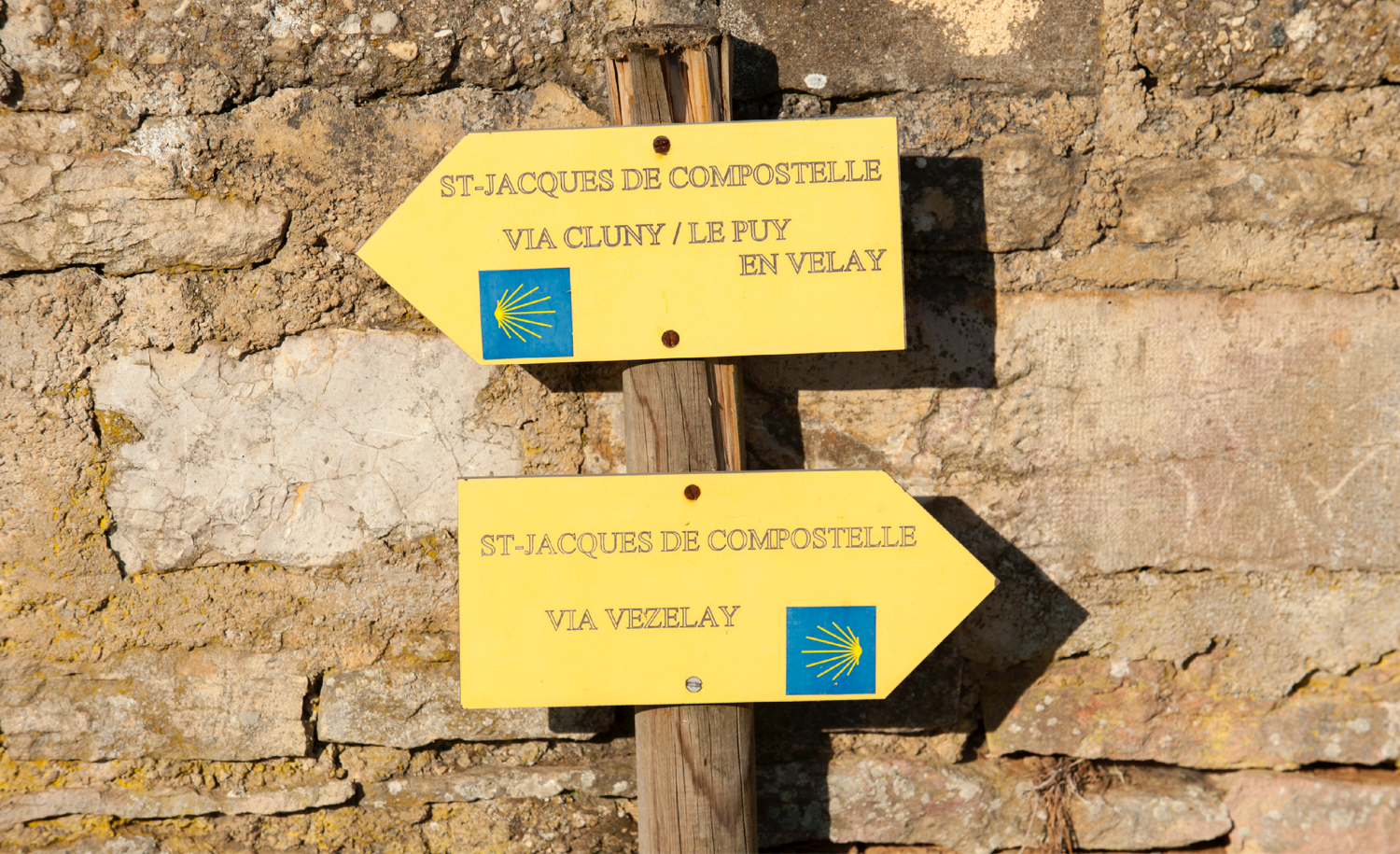Throughout the Middle Ages, Santiago de Compostela was a major destination for countless pilgrims from across Europe. To reach Spain, they crossed France using four symbolic routes starting from Paris, Vézelay, Puy-en-Velay and Arles. Locally, paths have been traced to reach these departure towns in the direction of Compostela.
Pilgrimage churches or simple sanctuaries, hospitals, bridges, wayside crosses mark these routes and bear witness to the spiritual and material aspects of the pilgrimage.
The “Chemin des Allemands” (Path of the Germans) connects Dijon to Beaune and crosses the villages of Côte de Nuits that will reveal their rich heritage through the architecture of monuments steeped in history.
The majesty of the castles of Gevey-Chambertin and the Château du Clos de Vougeot a few kilometers south will stand out in this landscape of vines. Along the way, the villages of Fixin and Nuits-Saint-Georges will be distinguished by the bright color of the varnished tiles of their church, that the sun covers with a star shining under the force of its bright rays. Before reaching the town center of Nuits-Saint-Georges, the oldest church of the village will proudly stand out, displaying its centuries of construction on the outside and its dazzling colors on the inside.
The Côte de Nuits is the stopover on the journey to Compostela, with suitable accomodations and shops offering the necessery services on the route to Puy-en-Velay, the departure town of the symbolic route to Spain.







